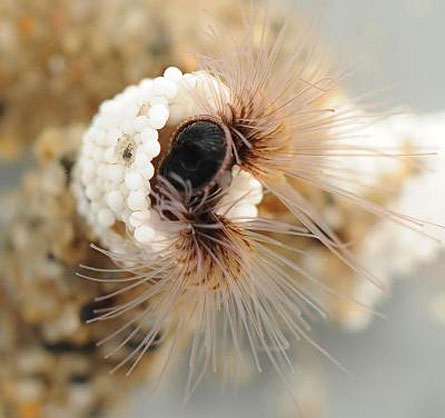Worm-inspired superglue
Material may one day paste together bones in the body
- More than 2 years ago
WASHINGTON — A new glue may worm its way into the medical realm as a tool for pasting together pieces of fractured bone. Researchers have created the glue based on the adhesive that a marine worm uses to cement its shell. Because the glue can be injected underwater and can stick and harden in an aqueous environment, it may one day be used inside the body, researchers reported August 17 at a meeting of the American Chemical Society.

“It literally glues skeletons together underwater, so we thought it would be a good model for wet surgery,” said Russell Stewart of the University of Utah in Salt Lake City.
Sandcastle worms, Phragmatopoma californica, dwell in the intertidal zone where they construct a tubelike shell by gluing together bits of sand, broken shells and other mineral debris. The glue is secreted from a special gland and hardens in less than 30 seconds underwater, forming a leatherlike consistency over several hours. Aiming to mimic the glue, Stewart and his colleagues identified several of the key proteins involved and analyzed their structure. About half of the glue proteins are highly charged molecules, some negative and some positive, so the researchers created similarly charged proteins and mixed in calcium and magnesium, much like the worm does.
Tests conducted underwater revealed that the newly formed glue bonds to wet bone and sets at a neutral pH, suggesting it could work inside the body. The strength of the researchers’ glue is about twice that of the worm’s (possibly because some of the proteins in the researchers’ mixture had stronger charges). Preliminary tests with bone cells cultured in test tubes suggest the new adhesive isn’t toxic. Future work will investigate modifications that could lead to the glue’s gradual disintegration, which might be desirable if the glue is used to piece together bits of bone during surgery. Ideally, as the bone eventually heals and regrows, the synthetic glue would break down in the body, Stewart said.
Phillip Messersmith of Northwestern University in Evanston, Ill., says that the new work is very interesting and that mimicking nature is a useful approach.







